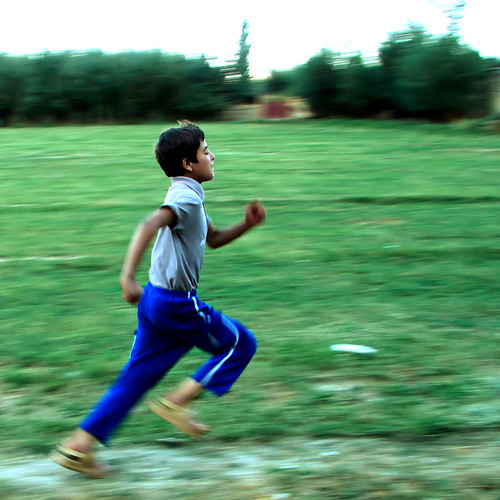As I’ve explained, I started my master’s program a few weeks ago. Through an online program, I’ll have a Master’s of Teaching and Learning in Curriculum and Instruction in 14 months. It’s my first time in an all-online learning environment. They’re doing it wrong.
As I’ve mentioned, my course requires participation in three online chats throughout its 8-week run. I missed the first chat as I was in a tiny town in a small town outside East London in Eastern Cape, South Africa, and the Internet was spotty.
Wednesday, I returned to the States.
Wednesday, our second chat was scheduled.
After two days of travel involving 3 continents, I had my sister pull over on the drive from O’Hare back down to Springfield, IL and I signed on sitting in supremely busy McDonald’s of Pontiac, IL. (If you don’t think there’s a global information divide, compare that last sentence to this situation and get back to me.)
No matter the free Internet juice my MacBook was sucking down, it just couldn’t talk to the chat room.
As had happened during my first go, I’d log in to the WebCT chat room, one person would send a line of dialogue and the infinite pinwheel of death would appear.
This happened across Firefox, Flock and Chrome.
After 30 minutes of trying, I e-mailed “Education Specialist” to say I wouldn’t be making it to the night’s chat.
Here’s what happens if you miss a chat:
After missing the last chat, I opted for the second choice. I’d intended to go with the first option, but the transcript never got posted. I inquired about it on the discussion board. But, as I’ve now learned, “Education Specialist” doesn’t so much use the discussion board.
I in my e-mail explaining my absence from Chat 2, I said I’d keep an eye out for the transcript. Subtle, I know.
Chat 2’s questions for discussion were:
Some potentially beefy material.
Before I read the transcript, I checked back to see what the requirements for participation were…non-existent.
On the other hand, I found this:
While no set requirements for participation exist, we are to write a synopsis of what we’ve learned in the chat and copy and paste it to our “Chat Log” along with our compiled responses to the weekly discussion forum.
I’m a bit worried that option 4 here runs in contrast with option 2 for those who missed the chat. Seems even if I opt for option 2, I’ll still need to include option 4 which is the same as option 1 above.
Here’s where I’d normally make the argument for putting all information in the same place, but I don’t have it in me right now.
Baffled, I’ve turned to the transcript.
Here’s how the discussion began:
![]()
The response to that one was kind of ugly.
The answers, by the way, Active Learning and Classroom Management. The first one makes me chuckle every time.
Then “Education Specialist” said:
![]()
But not everyone had finished typing the first strands, so it was a mix of strands in what was an actual request to repeat specific information back to the instructor.
In the middle of it all, someone asked a question about an upcoming assignment and received the reply:
![]()
Burn.
It was difficult to read the rest of the transcript. “Education Specialist” would yell each successive pre-announced question and my peers would type their responses back to “Education Specialist.”
Here’s the only feedback I could find:
![]()
Warms the cockles, no?
Forty-seven minutes in, and it was over.
Kaput.
In this course, we’ve read (or were assigned to read) multiple chapters about making learning active, moving from a teacher-centered approach, making learning authentic and multiple modalities.
Then, in one of the 3 times we’re all in the same “room,” it’s straight-forward teacher-centered call and response. Desperate for any actual evidence of, you know, chat, I took a tally.
In the discussion that took place before “Education Specialist” left the room, peers responded directly to one another a total of 5 times. Those responses were generally along the lines of “I have used that tool and find it very helpful as well in the math classroom.”
Hardly the free, open and democratic exchange of ideas I work to facilitate in my classroom.
Chat can and should be a much more powerful tool for facilitating learning from varied geographic areas.
Election Night 2008, I sat in Chris’ living room with my laptop, logged in to a moodle chat room open to all SLA learners for discussion of the history that was being made. People were throwing out commentary, questions, answers, tips for the channel with the best coverage. When it got down to the wire, a rich conversation started about how some news outlets were calling the election whilst others were not.
No pre-fab discussion questions were needed. Something interesting to talk about and learn from was happening and so we got together to explore it.
This week, seasoned educators from around the country were asked “What techniques do you utilize to manage classroom behavior?” and 3 people responded with 10 lines of text.
Every second of the 47 minutes that chat was being facilitated could and should have been dedicated to just that question. Teachers from multiple disciplines talking about what they do to set and maintain the climate of their classrooms, and we spent maybe 5 minutes.
This isn’t active learning. This isn’t inquiry. This isn’t constructivist. This isn’t, well, it just isn’t.
“HOW DO YOU INCORPORATE THE THEORIES OF VYGOTSKI, PIAGET, DEWEY, ERIKSON AND OTHE THEORISTS INTO YOUR CLASSROOM[?]”
Better than this.
Hi, you’re doing it wrong.

 I wasn’t quite certain what to expect when meeting the principal of Wavecrest Primary School Wednesday.
I wasn’t quite certain what to expect when meeting the principal of Wavecrest Primary School Wednesday. Running 13 miles didn’t kill me. I don’t even think I garnered any scars.
Running 13 miles didn’t kill me. I don’t even think I garnered any scars.
 October 17 I’ll be running the
October 17 I’ll be running the 
 Khanyiso, Mlungisi and I were in charge of leading the session on multimedia in the classroom Wednesday. It was the afternoon and the usual grumblings about too much theory and not enough practice had begun in a small contingent of teachers.
Khanyiso, Mlungisi and I were in charge of leading the session on multimedia in the classroom Wednesday. It was the afternoon and the usual grumblings about too much theory and not enough practice had begun in a small contingent of teachers.